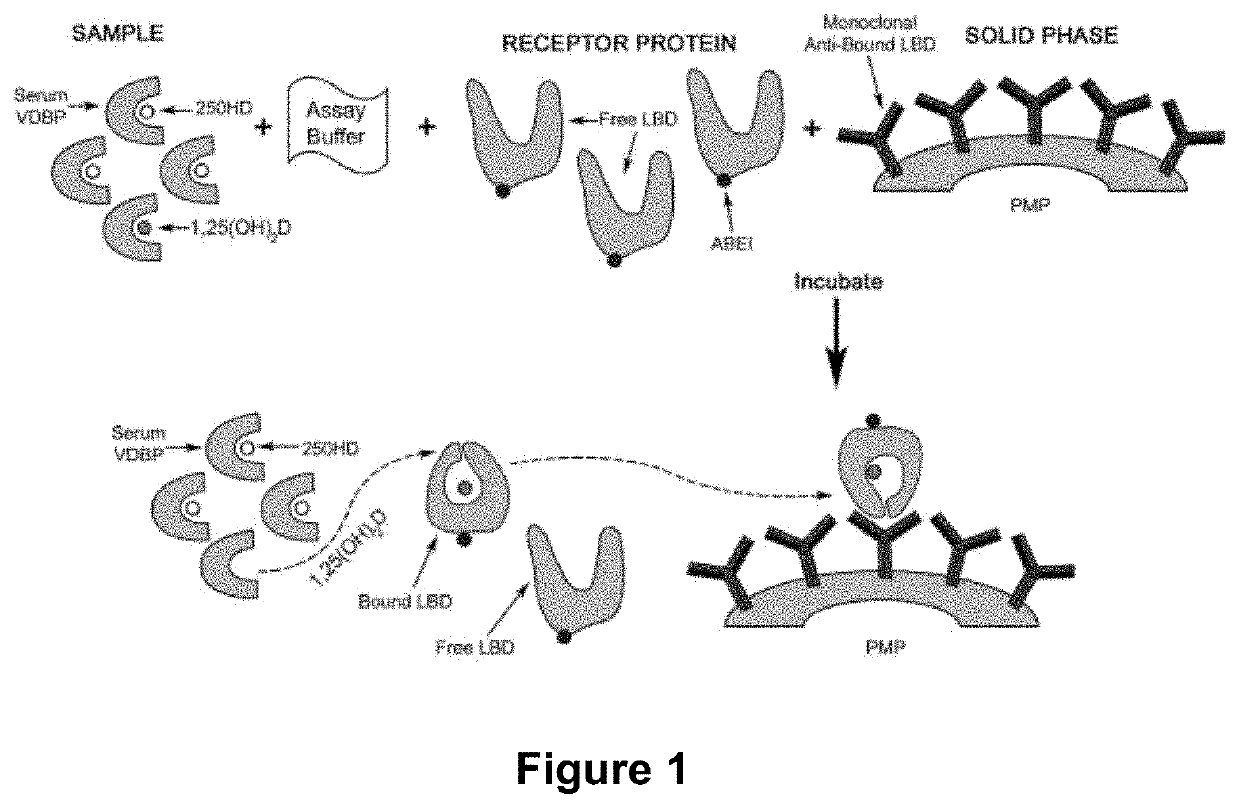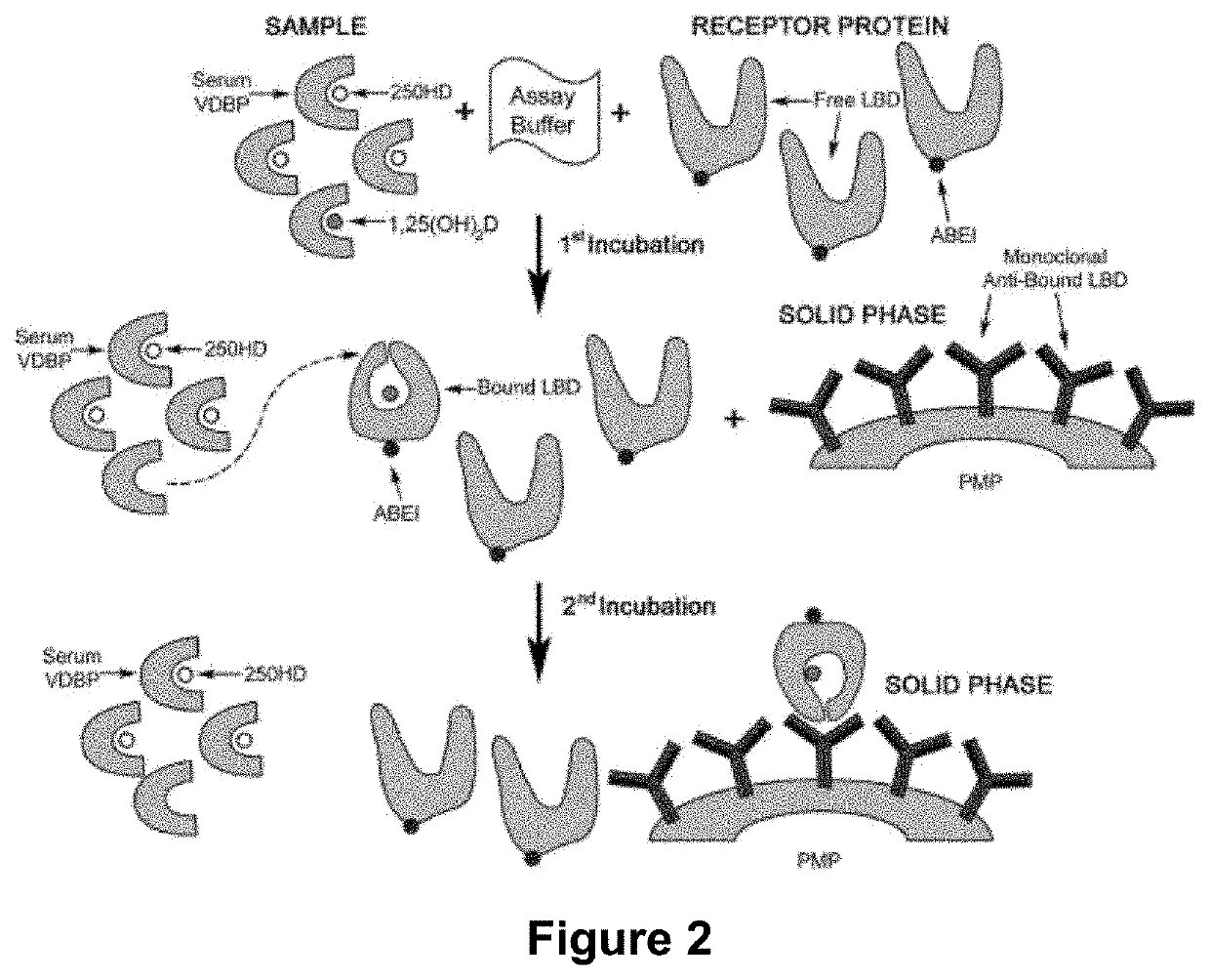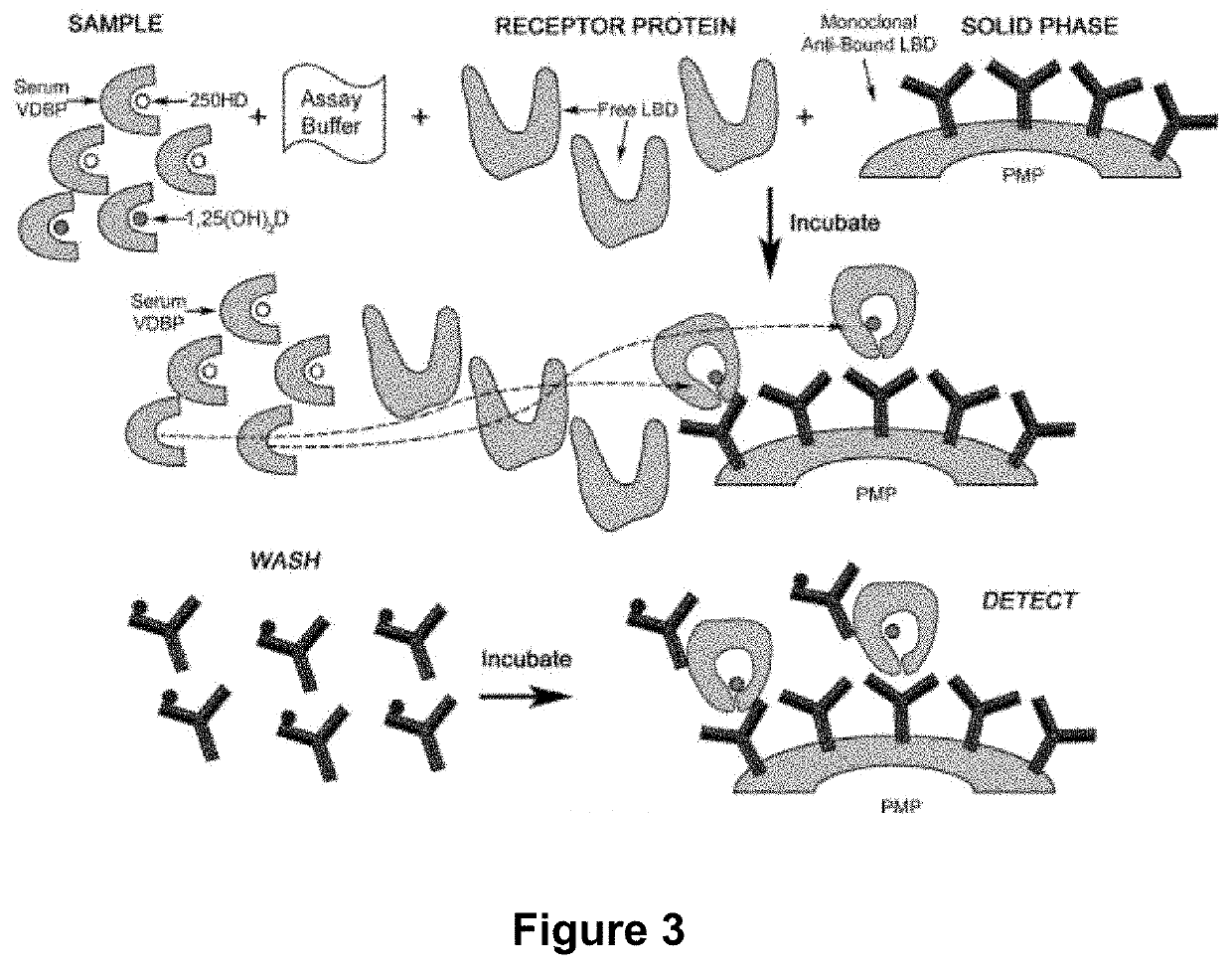Use of 1,25-Dihydroxyvitamin D Values in Ratio with PTH as a Prognostic Biomarker
a technology of dihydroxyvitamin d and pth, which is applied in the direction of disease diagnosis, instruments, biological material analysis, etc., can solve the problems of increasing burden on health care systems, unfavorable outcomes, and progressing deterioration of renal function, so as to improve renal function in patients
- Summary
- Abstract
- Description
- Claims
- Application Information
AI Technical Summary
Benefits of technology
Problems solved by technology
Method used
Image
Examples
example 1
sub>2D assay
[0134]One of the preferred embodiment of the assay of the invention is described in in PCT Patent Publication WO 2014 / 114780 and in US Patent Publication No. 2015-0361178. In brief, paramagnetic microparticles (PMPs) (Dynal, Norway) were coated with a conformation-specific monoclonal antibody capable of recognizing the VDR-LBD / 1,25(OH)2D complex antibody following the supplier instructions. The recombinant VDR-LBD that was used in the assay was prepared as described in Example 1, and was coupled to an affinity tag (designated in the following as “TAG”). The 11B4H11H10 monoclonal antibody, described above, was used for this purpose. A mouse monoclonal anti-TAG antibody was conjugated with cyclic AminoButhylEthylisoluminol (cABEI) in PBS buffer pH 7.4. The calculated cABEI incorporation was from 2-3 molecules per antibody molecule. Calibrators were prepared by adding different concentrations of an ethanolic solution of 1,25(OH)2D into a steroid-free, charcoal-stripped huma...
example 2
OH)2D / PTH Ratio as Biomarker of Renal Injury
[0137]Materials and Methods
[0138]The cohort studied consisted of 1083 patients enrolled in a biomarker substudy of a randomized, double-blind, placebo controlled, multicenter study that enrolled 6975 patients with clinical evidence of chronic and stable HF (NYHA II-IV), irrespective of the cause and the level of left ventricular ejection fraction (LVEF). In relation to renal function, 180 patients of the cohort were normal (i.e., eGFR (mL / min / 1.73 m2)≥90) and the remainder had eGFR below 90. Venous blood samples were drawn on EDTA at randomization and after three months of follow-up. Patients rested supine for at least 15 min before blood sampling. Blood was centrifuged at 4° C. within 10 minutes of draw and plasma aliquots were shipped on dry ice to a central laboratory. Samples were stored at −70° C. until assayed. In the analysis, worsening of renal function (WRF) was employed as the endpoint.
[0139]The plasma concentrations of 1,25-dihy...
PUM
| Property | Measurement | Unit |
|---|---|---|
| concentration | aaaaa | aaaaa |
| concentration | aaaaa | aaaaa |
| threshold | aaaaa | aaaaa |
Abstract
Description
Claims
Application Information
 Login to View More
Login to View More - R&D
- Intellectual Property
- Life Sciences
- Materials
- Tech Scout
- Unparalleled Data Quality
- Higher Quality Content
- 60% Fewer Hallucinations
Browse by: Latest US Patents, China's latest patents, Technical Efficacy Thesaurus, Application Domain, Technology Topic, Popular Technical Reports.
© 2025 PatSnap. All rights reserved.Legal|Privacy policy|Modern Slavery Act Transparency Statement|Sitemap|About US| Contact US: help@patsnap.com



